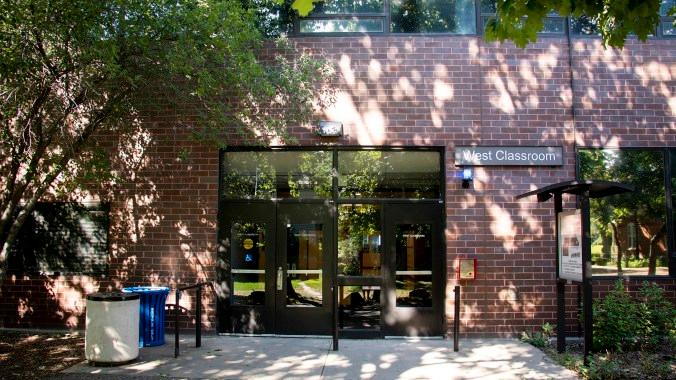
After four employees who worked in the same office area of a Metropolitan State University building were diagnosed with three different kinds of cancer, the school says it has tested the Auraria campus building and found no connection to the disease.
In a town hall meeting Tuesday, university officials explained the results of two independent investigations that were contracted by MSU and the Auraria Higher Education Center. The engineering consulting firms, CTL Thompson and ATC Group Services, each conducted a variety of tests on the West Classroom, where the employees worked.
The focus of the tests was on indoor exposures that could be carcinogenic, such as ionizing radiation, radon, heavy metals, mold, carbon dioxide and carbon monoxide. The firms also tested for volatile organic compounds, which are found in everyday items like perfumes, dry cleaning chemicals and hand sanitizers. While many of those compounds have no known health effects, some are highly toxic.
The results in all of the categories came back well under state and federally mandated exposure benchmarks, but some audience members asked if they should trust the results.
“None of us want to see anybody get sick. We live and work in these buildings as well," said Larry Sampler, MSU’s vice president and chief operations officer. “But you should trust these results because two licensed industrial hygienist firms have independently gone in and examined the buildings, and because to be honest, we’re not jerks. We’re not going to put you in a building that we don’t think is safe.”
The firms did not test for asbestos or lead. The types of cancer the employees were diagnosed with -- liver, lung and two cases of breast cancer -- aren’t common outcomes for asbestos and lead, said Jonathan Samet, epidemiologist and dean of the Colorado School of Public Health, at the town hall. Because there were no cancers or diseases associated with asbestos or lead, and because the university regularly tests for these components, they weren’t included in the tests.
Samet said that the investigation would have been different had the cancers been related to known exposures. He used the example of Legionnaires disease, a type of pneumonia caused by bacteria. In 1976, the bacteria Legionella was discovered when 34 people died and 221 others were sickened after an American Legion convention in Philadelphia.
In cases like the Legionnaires outbreak, it is easier to determine the underlying exposure. However, in cases like the West Classroom, determining an underlying exposure for three different cancer types is much more challenging.
Samet said that ultimately, cancer is common, and cancer in the environment is a complicated story.
“One frustration with cancers caused by the environment is that we don’t have a way to look at the cancer, whether it's under the microscope or using sophisticated new techniques, looking at mutations, for example, to say ‘yes, this cancer was caused by smoking, this cancer was caused by radon,’” Samet said. “I hope someday we’ll have those tools.”









